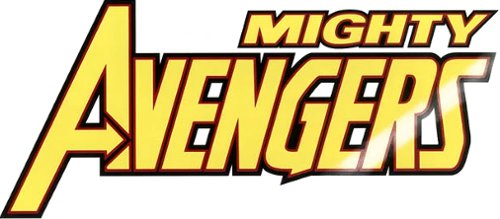Avengers Membership Primer
Membership in the Avengers is an often-hallowed (and even more often revised) honor. As their numbers swelled, the Avengers changed and expanded their definitions of membership to include various categories. On other occasions, individuals have falsely claimed membership in the group. There are also murky areas of history where who is or is not an official Avenger is a matter of some debate.
The original Avengers (Thor, Iron Man, Ant-Man, Wasp, and Hulk) are typically considered the founders of the organization, with their signatures adorning the Avengers Charter (although 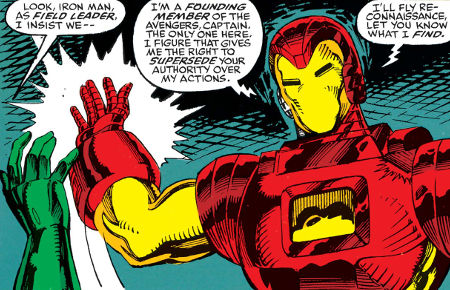 Avengers: Earth's Mightiest Heroes #1 indicated it was actually Rick Jones who signed on behalf of the Hulk). Founding membership privileges have occasionally been invoked as the right to assemble any new team of Avengers, or even to overrule the sitting chairperson on matters. The latter privilege was typically only invoked by Iron Man when he was being a jerk, however.
Avengers: Earth's Mightiest Heroes #1 indicated it was actually Rick Jones who signed on behalf of the Hulk). Founding membership privileges have occasionally been invoked as the right to assemble any new team of Avengers, or even to overrule the sitting chairperson on matters. The latter privilege was typically only invoked by Iron Man when he was being a jerk, however.
Captain America was traditionally not recognized as a founding member. Indeed, Iron Man's above effort to "pull rank" as a founder was used against Cap during 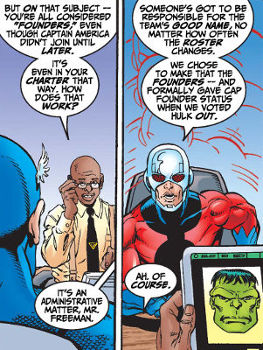 Operation: Galactic Storm. However, beginning with Avengers (3rd series) #4, it was retroactively established that Captain America was given the position of founder in all official documents since the early days of the Avengers. The limited series Avengers: Earth's Mightiest Heroes later went into much greater detail on this. It was revealed the National Security Council only provided the Avengers with special clearance because of Captain America's inclusion on the roster in those early days.
Operation: Galactic Storm. However, beginning with Avengers (3rd series) #4, it was retroactively established that Captain America was given the position of founder in all official documents since the early days of the Avengers. The limited series Avengers: Earth's Mightiest Heroes later went into much greater detail on this. It was revealed the National Security Council only provided the Avengers with special clearance because of Captain America's inclusion on the roster in those early days.
During the Avengers' first few years, the concept of reserve Avengers did not exist. The membership was so small that any Avenger was either an active member or a former member. In matters of consequence, such as changes to the by-laws or voting in new members, all past and present Avengers were given the opportunity to attend and give their opinions, such as when Spider-Man was considered for membership in Amazing Spider-Man Annual #3.
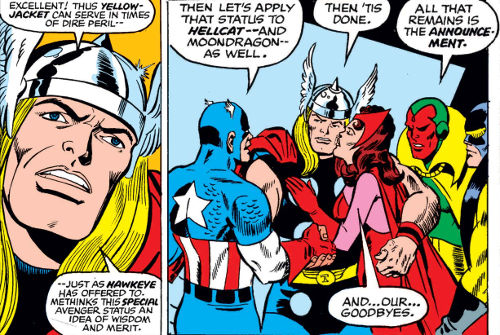 The concept of reserves was slowly introduced, beginning when Black Knight was gifted with membership in Avengers #71 even though he did not intend to join the active roster. The idea of Reserve Avengers was revisited in #151 when two probationary members, Moondragon and Hellcat, chose not to join the final roster, but the team wanted to recognize their inclusion anyway.
The concept of reserves was slowly introduced, beginning when Black Knight was gifted with membership in Avengers #71 even though he did not intend to join the active roster. The idea of Reserve Avengers was revisited in #151 when two probationary members, Moondragon and Hellcat, chose not to join the final roster, but the team wanted to recognize their inclusion anyway.
Official reserves were considered in greater detail once Henry Peter Gyrich began imposing draconian control over the team in order to maintain their NSC credentials in #181. Gyrich ordered the team to limit their roster to a strict, pre-approved, seven-member team. He also attempted to impose other rules, such as a token minority quota. To cooperate with Gyrich as best they could, the Avengers instituted a “Stand-By” Avenger policy, where a select number of additional members beyond the main seven could be pre-approved by the government and called to action without any red tape should the situation call for it. Although Gyrich's restrictions were largely disposed of in #192, the Avengers kept the basic structure he set up for them. Two official reserved spots, known as "detached membership status," were set up in #243 for Thor and She-Hulk.
In #211, Captain America invoked chairman privilege to once again limit the membership, paring it down to a core roster of six. Hawkeye was operating under this restriction when he formed the initial West Coast Avengers roster with five members. He spent the first year of the series trying to 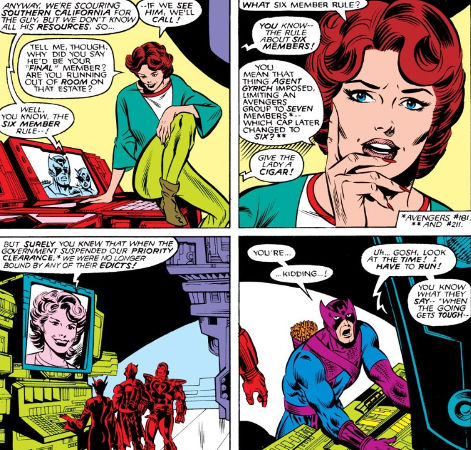 nail down the team's sixth member, courting both Firebird and the Thing during that time period for the one open spot. However, the Vision's benevolent attempt at world takeover through the Avengers' government computer network connection in #254 frightened the NSC, and the Avengers' government status was suspended in #258. So, as the Wasp reminded him in West Coast Avengers (2nd series) #10, the Avengers weren't operating under ANY official limitations to their roster at the time. Hawkeye could've just recruited BOTH Thing and Firebird if he felt like it! Ironically, both ended up leaving the team without sticking around full-time.
nail down the team's sixth member, courting both Firebird and the Thing during that time period for the one open spot. However, the Vision's benevolent attempt at world takeover through the Avengers' government computer network connection in #254 frightened the NSC, and the Avengers' government status was suspended in #258. So, as the Wasp reminded him in West Coast Avengers (2nd series) #10, the Avengers weren't operating under ANY official limitations to their roster at the time. Hawkeye could've just recruited BOTH Thing and Firebird if he felt like it! Ironically, both ended up leaving the team without sticking around full-time.
Regarding franchise teams, the West Coast Avengers were considered an official extension of the main Avengers roster, not a wholly separate institution. For example, Moon Knight was inducted in 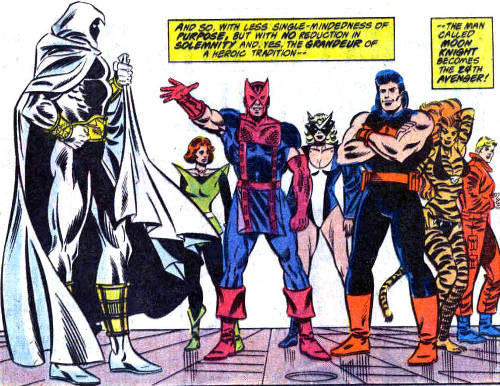 West Coast Avengers (2nd series) #33 as the "24th member of the Avengers" as opposed to the 10th member of the West Coast Avengers. The Great Lakes Avengers, however, were completely unofficial at the onset, merely trying to cash in on the Avengers’ name. Once Hawkeye and Mockingbird began training them, Hawk lobbied for the GLA to receive some official status in Avengers #305, but most membership records since then indicate he was ultimately unsuccessful.
West Coast Avengers (2nd series) #33 as the "24th member of the Avengers" as opposed to the 10th member of the West Coast Avengers. The Great Lakes Avengers, however, were completely unofficial at the onset, merely trying to cash in on the Avengers’ name. Once Hawkeye and Mockingbird began training them, Hawk lobbied for the GLA to receive some official status in Avengers #305, but most membership records since then indicate he was ultimately unsuccessful.
The Avengers created a modified charter when they fell under the jurisdiction of the United Nations in Avengers #329 and Avengers West Coast #69, establishing the largest official roster yet. Both coasts now hosted an active seven member roster in addition to a full set of seven "reserve substitutes" each to be called to active duty, whether to replace active members if unavailable or increase the roster in dire circumstances. However, this enlarged roster structure became unwieldy, causing Captain America to complain about how the reserve system was in shambles in Captain America #401. The reserve substitute idea was quietly retired after that, and the UN charter itself abandoned when the Avengers rejected the United Nations for keeping them out of the Genoshan Civil War in Avengers West Coast #101.
When Vision and the East Coast branch led a successful motion to disband the West Coast team in AWC #102, Scarlet Witch and the other Whackos chose to quit the Avengers in anger rather 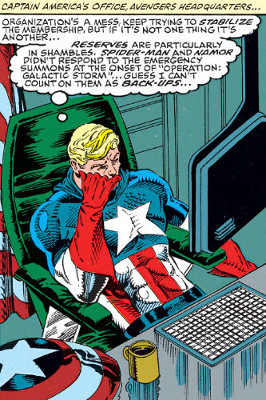 than be folded into the reserves. This raises a question of what it really means to "quit" the Avengers. Scarlet Witch, Spider-Woman and USAgent made a dramatic show of turning in their Avengers ID cards in the above issue. Earlier, Vision and Scarlet Witch left the active roster after his attempted world takeover in Avengers #254. Gyrich and Raymond Sikorsky still wanted to debrief Vision on his intentions, but Wanda ended their inquiry in Vision and the Scarlet Witch (2nd series) #1 by turning in their IDs, supposedly a higher form of quitting than what they had already done to sever ties with the team. The United Nations charter, at least, specified that only Active and Reserve Avengers should have functional Avengers IDs, while Inactive members would not. Moon Knight got in trouble once for misusing his Avengers credentials to grease some wheels for his own purposes when not active with the team. An inquiry in Marc Spector: Moon Knight #50 led to him abandoning his ID and cutting ties with the team. Still, official roster history doesn't change just because an ID card is returned. The phrase "Once an Avenger, Always an Avenger..." is well known. Therefore, turning in ID cards or insisting on quitting the team entirely is generally seen to be more of a token or spiteful gesture.
than be folded into the reserves. This raises a question of what it really means to "quit" the Avengers. Scarlet Witch, Spider-Woman and USAgent made a dramatic show of turning in their Avengers ID cards in the above issue. Earlier, Vision and Scarlet Witch left the active roster after his attempted world takeover in Avengers #254. Gyrich and Raymond Sikorsky still wanted to debrief Vision on his intentions, but Wanda ended their inquiry in Vision and the Scarlet Witch (2nd series) #1 by turning in their IDs, supposedly a higher form of quitting than what they had already done to sever ties with the team. The United Nations charter, at least, specified that only Active and Reserve Avengers should have functional Avengers IDs, while Inactive members would not. Moon Knight got in trouble once for misusing his Avengers credentials to grease some wheels for his own purposes when not active with the team. An inquiry in Marc Spector: Moon Knight #50 led to him abandoning his ID and cutting ties with the team. Still, official roster history doesn't change just because an ID card is returned. The phrase "Once an Avenger, Always an Avenger..." is well known. Therefore, turning in ID cards or insisting on quitting the team entirely is generally seen to be more of a token or spiteful gesture.
After returning from the Franklinverse, the Avengers established a traditional seven person roster again in Avengers (3rd series) #4, with two additional members as reservists by #10. They 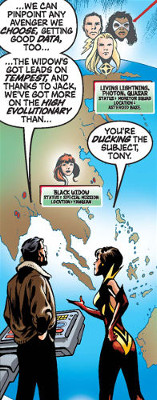 expanded their active reserves considerably with #38 in an effort to become more proactive. The Avengers Field Operations or Monitor Squad duties included various reservists beyond the active roster performing investigations, watching out for general or specific threats before they rose, and so on. This structure proved highly advantageous during the Kang War, but deconstructed soon after it ended in #55 (and as Kurt Busiek's left the title).
expanded their active reserves considerably with #38 in an effort to become more proactive. The Avengers Field Operations or Monitor Squad duties included various reservists beyond the active roster performing investigations, watching out for general or specific threats before they rose, and so on. This structure proved highly advantageous during the Kang War, but deconstructed soon after it ended in #55 (and as Kurt Busiek's left the title).
When the Avengers Disassembled and a new Avengers were formed by Captain America and Iron Man, they operated as a looser organization. While Cap and Shellhead certainly had authority to make people Avengers, their falling out during the Superhuman Civil War led to discussion over who the "real" Avengers were. Iron Man had a strong claim, being a founding member, veteran chairperson and holding the legal title to the name and rights associated with "The Avengers," which he gave over to the United States government as head of S.H.I.E.L.D. to establish the Avengers Initiative. Captain America was also an official founder and chairperson, with S.H.I.E.L.D.-recognized Champion status to assemble teams as he saw fit. So when they went underground, Luke Cage and his friends held to the idea that if Cap said they were the Avengers, then they were. One could argue a gray area existed for members who joined after they were underground, though, like Iron Fist and Doctor Strange. These Avengers weren't recruited by Captain America directly, but were recruited by a team that claimed Cap's authority as the "real" Avengers.
Matters became even more complicated after the Skrull invasion, when Tony Stark fell out of favor with the government and command of the Initiative was turned over to Norman Osborn. Operating 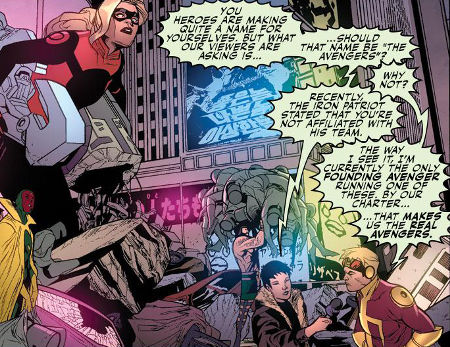 in the same position Stark previously did, Osborn inherited the legal authority to name members to the Avengers, as he did with the "Dark Avengers." While Luke Cage's team continued to operate in America as unregistered vigilantes, a third faction developed when Hank Pym returned and formed his own team. Operating mostly internationally, Pym's team was outside Osborn's jurisdiction to shut them down. And, as the only active founding member at the time, Pym asserted that HIS team were the official Avengers and Osborn's were only pretenders.
in the same position Stark previously did, Osborn inherited the legal authority to name members to the Avengers, as he did with the "Dark Avengers." While Luke Cage's team continued to operate in America as unregistered vigilantes, a third faction developed when Hank Pym returned and formed his own team. Operating mostly internationally, Pym's team was outside Osborn's jurisdiction to shut them down. And, as the only active founding member at the time, Pym asserted that HIS team were the official Avengers and Osborn's were only pretenders.
The beginning of the Heroic Age ousted Norman Osborn and consolidated the truly heroic Avengers teams again. Given Osborn's fall from grace and that most of his Avengers returned to crime after disbanding, the Avengers have likely de-legitimized any authority or records of these Dark Avengers in the team history or membership status. Certainly, Osborn's attempt to create a New Dark Avengers months later was on even more dubious footing. He claimed he was unlawfully removed from his position in the Initiative without trial or charges, and asserted he retained legal authority over the Avengers name. Since he was defeated, no one ended up taking this seriously, and the New Dark Avengers are certainly an unauthorized franchise.
The Heroic Age teams of Avengers (Tower, Mansion and Secret) all seemed to be equally official and authorized. Although the Secret Avengers were covert in nature, they were also recruited and staffed by Steve Rogers, and maintained a liaison relationship with the other teams through Hill, Hand and Carter. The Avengers Academy operated in a gray area... Speedball admitted at one point he didn't know if his status as an Academy instructor meant he was an Avenger or not. 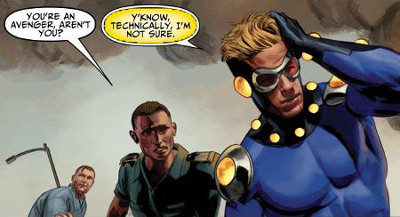 Academy students qualified as Avengers-in-training, but the first class and certainly the wider student body after Fear Itself didn't receive official qualifications. Those only came at the end of the series when the first class graduated with "Avengers, Third Grade" status bestowed upon them. Other Academy students likely never received any official status, and the Academy quietly closed behind-the-scenes, apparently some time prior to Secret Wars.
Academy students qualified as Avengers-in-training, but the first class and certainly the wider student body after Fear Itself didn't receive official qualifications. Those only came at the end of the series when the first class graduated with "Avengers, Third Grade" status bestowed upon them. Other Academy students likely never received any official status, and the Academy quietly closed behind-the-scenes, apparently some time prior to Secret Wars.
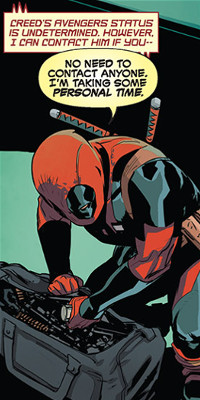 A number of Avengers franchise teams have arisen in recent years, mudding the waters regarding membership. By comparison, X-Men franchise teams such as X-Force, X-Factor, Excalibur and the New Mutants were almost never treated as "all being X-Men." But do the same rules apply to groups like the Unity Division, the Robot Division, Avengers Idea Mechanics or A-Force? There is a strong argument that the Avengers name has become so widely distributed that there is no "master roster" anymore. Past team leaders like Luke Cage and Carol Danvers seem to enjoy the power to create new teams, whereas previously founders or active chairpersons alone seemed to claim that power. It's been many years since anyone even mentioned the idea of chairpersons, charters or by-laws. Although unauthorized or unrecognized franchises still exist, such as Doom's Avengers or Hydra Steve's team, strict rules on who can be an Avenger have become lax.
A number of Avengers franchise teams have arisen in recent years, mudding the waters regarding membership. By comparison, X-Men franchise teams such as X-Force, X-Factor, Excalibur and the New Mutants were almost never treated as "all being X-Men." But do the same rules apply to groups like the Unity Division, the Robot Division, Avengers Idea Mechanics or A-Force? There is a strong argument that the Avengers name has become so widely distributed that there is no "master roster" anymore. Past team leaders like Luke Cage and Carol Danvers seem to enjoy the power to create new teams, whereas previously founders or active chairpersons alone seemed to claim that power. It's been many years since anyone even mentioned the idea of chairpersons, charters or by-laws. Although unauthorized or unrecognized franchises still exist, such as Doom's Avengers or Hydra Steve's team, strict rules on who can be an Avenger have become lax.
The Avengers began as a club, an exclusive institution for members devoted to a higher calling. Since then, however, the Avengers have expanded to become an idea, and an ideal, that many heroes aspire to in many different ways. Many heed the call then, for now, and forever, the Avengers Assemble!
